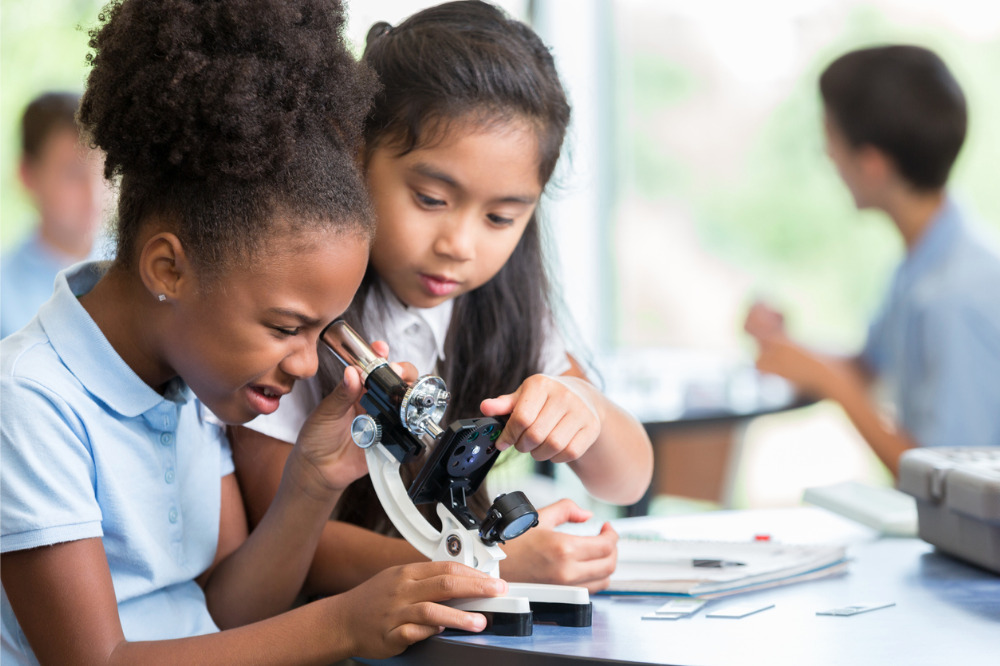
The most recent TIMSS report shows that Australia has climbed into top 10 in Year 8 maths and science, and Year 4 science.
However, while the trend certainly bodes well, there have been long-standing calls for schools to provide a stronger focus on the inquiry-based and problem-solving aspects of science.
In April, Federal Education Minister unveiled a raft of proposed changes to the Australian Curriculum he says will ensure the country regains its place as a ‘world power’ in education.
Under the proposed changes, science education will see a stronger focus on inquiry learning, an approach that emphasises “truth seeking” and encourages students to ask questions, develop ideas and make observations instead of merely memorising facts and taking notes.
Another important issue that schools are trying to address is that of declining female engagement in the subject.
A recently released study shed some light on this, with Monash University researchers’ Camilla Fisher and Associate Professor Christopher Thompson and Dr. Rowan Brookes of Melbourne University, finding that gender-bias in the classroom can make female students feel unwelcome and ultimately lead to their withdrawal from studying science.
The researchers surveyed almost 400 undergraduate students across eight Australian universities, looking to understand their gendered experience of studying physics.
The study purpose was to investigate how student experiences of science identity, belonging, and discrimination, which are known to impact student attrition, were affecting the persistence of students at university and in the science career pipeline.
“Research has shown female students are at higher risk of attrition from a science career pathway and our study sought to understand if the university experience was a contributing factor,” Fisher said.
The study, published in international journal Research in Science Education, is one of the few on the subject within an Australian context.
The researchers found some of the results alarming, with both male and female students reporting experiences of gender discrimination.
“The negative attitudes from young men – their frustrations at being sidelined was a surprise,” Fisher said.
Female students commonly reported negative experiences relating to small group work.
‘I think that in class and group discussions, I find that women often get talked over, interrupted, and disregarded when trying to make a point or answer a question’. – Female student #8
Another student said, group work was intimidating with men not allowing them to speak or making comments along the lines of, ‘You don’t look like a science person’.
Conversely, some of the male students reported that initiatives to recruit more women into STEM was discriminatory against men.
‘I’ve been brushed off. Possibly because people don’t want white males, they prefer diversity over merit’. –Male student #2
This is despite The Office of the Chief Scientist saying, ‘The gender gap in the STEM workforce continues to persist.’
The researchers note that although group work has been of particular interest when addressing the gender imbalance in STEM, with previous research suggesting female students prefer active learning and collaboration, this study encountered different outcomes.
“Responses from female students in the study suggest that this [group learning] is not having the desired effect, with female students reporting feeling unheard by their male peers,” Fisher said.
‘In my first-year studies I was assumed to be not as smart as my male peers, by my male peers. This culminated in a number of ‘mansplaining’ incidents, that in hindsight definitely made me avoid attending class and even compulsory class, due to not wanting to feel as stupid as they thought I was.’ – Female student #4
According to Fisher, the results highlight potential ‘at-risk’ groups for attrition in the STEM fields and provide an insight into the male student perspective on gender equity in STEM.
“We wanted a baseline understanding of the undergraduate science student experience. The research highlights the need to look at small group work being more equitable and the need for more education on lingering inequality,” she said.
“Government bodies and other organisations invest heavily into attracting women to STEM subjects. We also need to be working out how we keep them engaged. No-one wants to exist in a space where they feel unwelcomed or demeaned.”
Role models important to female science engagement
Rachael Neumann, Head of Startups, Australia and New Zealand at Amazon Web Services (AWS), said career in STEM begins with exposure and visibility to those already working in the STEM fields and having an example for girls to model themselves on and strive towards.
“If these students aren’t seeing someone that looks like them working in these careers, then it is harder for them to imagine themselves in those positions,” Neumann told The Educator.
“As an industry, we need to be more proactive in breaking down the barriers and stereotypes of what it means to pursue a career in the industry and help shed a light on the diverse career paths that goes into working in the STEM fields”.


